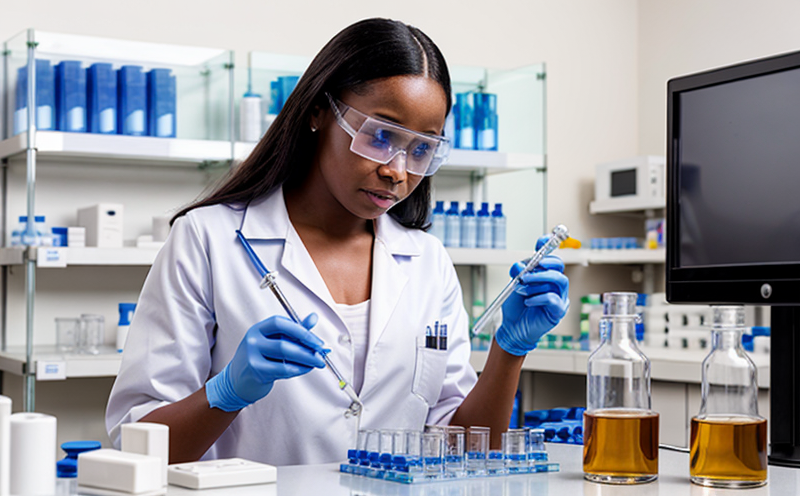Pharmaceutical laboratory compliance refers to the adherence of a pharmaceutical laboratory to established regulatory guidelines, standards, and industry best practices in order to ensure the quality, safety, and efficacy of its products. Pharmaceutical laboratories play a critical role in the development, manufacturing, and testing of pharmaceuticals, and as such, they must operate within a framework that ensures compliance with applicable laws, regulations, and standards.
The primary regulatory bodies responsible for overseeing pharmaceutical laboratory compliance include the US Food and Drug Administration (FDA), the European Medicines Agency (EMA), and the International Council for Harmonisation (ICH). These organizations establish guidelines, standards, and regulations that must be followed by pharmaceutical laboratories in order to ensure the quality of their products. For example, the FDAs Good Manufacturing Practice (GMP) regulation outlines requirements for laboratory operations, including equipment maintenance, personnel training, and record-keeping.
In addition to regulatory compliance, pharmaceutical laboratories must also adhere to industry best practices, such as those outlined by the International Organization for Standardization (ISO). ISO 17025 is an international standard that specifies the general requirements for competence in testing and calibration. Pharmaceutical laboratories must demonstrate compliance with this standard through regular audits and assessments.
Laboratory Operations:
Pharmaceutical laboratory operations involve a range of activities, including sample collection, analysis, and reporting. Laboratory operations can be divided into several key areas:
Sample Receipt and Storage:
Samples are received from external sources or generated within the laboratory
Samples are stored in designated areas, such as refrigerators or freezers, to maintain their integrity
Sample labeling and tracking systems are implemented to ensure accurate identification and handling of samples
Equipment Maintenance and Calibration:
Calibration:
Equipment is calibrated regularly to ensure accuracy and precision
Calibration procedures are documented and available for review
Personnel responsible for calibration are trained and qualified
Maintenance:
Equipment is maintained regularly to prevent malfunction or breakdown
Maintenance schedules are implemented and followed
Documentation of maintenance activities is maintained
Personnel Training and Qualification:
Training:
Personnel receive regular training on laboratory procedures, equipment operation, and safety protocols
Training records are maintained for review
Personnel demonstrate understanding and competence in their roles through assessment or evaluation
Qualification:
Personnel are qualified to perform specific tasks or operate equipment based on their experience, education, and training
Qualification procedures are documented and available for review
Personnel are aware of their roles and responsibilities within the laboratory
Quality Control and Assurance:
Quality Control:
Quality control activities are implemented to ensure accuracy and precision in laboratory operations
Quality control procedures are documented and available for review
Results of quality control activities are recorded and monitored
Quality Assurance:
Quality assurance activities are implemented to ensure the effectiveness of quality control measures
Quality assurance procedures are documented and available for review
Personnel responsible for quality assurance are trained and qualified
Record-Keeping and Documentation:
Documentation:
All laboratory operations, including sampling, analysis, and reporting, are documented in a timely manner
Documentation is accurate, complete, and legible
Records of documentation are maintained for review
Record-Keeping:
Laboratory records, including test results, calibration certificates, and maintenance logs, are stored securely and accessed as needed
Access to laboratory records is restricted to authorized personnel
Records are maintained for a specified period, as required by regulatory authorities
QA Section
Q: What are the primary regulatory bodies responsible for overseeing pharmaceutical laboratory compliance?
A: The primary regulatory bodies responsible for overseeing pharmaceutical laboratory compliance include the US Food and Drug Administration (FDA), the European Medicines Agency (EMA), and the International Council for Harmonisation (ICH).
Q: What is ISO 17025, and why is it important for pharmaceutical laboratories?
A: ISO 17025 is an international standard that specifies the general requirements for competence in testing and calibration. Pharmaceutical laboratories must demonstrate compliance with this standard through regular audits and assessments.
Q: How often should laboratory equipment be calibrated?
A: Laboratory equipment should be calibrated regularly to ensure accuracy and precision. The frequency of calibration depends on the type of equipment, but as a minimum, it should be done at least annually.
Q: What is the role of quality control in a pharmaceutical laboratory?
A: Quality control activities are implemented to ensure accuracy and precision in laboratory operations. These activities include routine testing and verification of results to ensure that they meet established standards.
Q: Who is responsible for ensuring compliance with regulatory requirements in a pharmaceutical laboratory?
A: The laboratory director or manager is ultimately responsible for ensuring compliance with regulatory requirements. However, all personnel within the laboratory have a role to play in maintaining compliance through their daily activities.
Q: What are the consequences of non-compliance with regulatory requirements in a pharmaceutical laboratory?
A: Non-compliance with regulatory requirements can result in fines, penalties, and even loss of licensure or accreditation. In extreme cases, it may also lead to product recall or withdrawal from the market.
Q: How often should personnel be trained on laboratory procedures, equipment operation, and safety protocols?
A: Personnel should receive regular training on laboratory procedures, equipment operation, and safety protocols as specified in their job descriptions or training plans. This can include initial training upon hire, refresher training every 6-12 months, and ongoing training as needed.
Q: What is the importance of record-keeping and documentation in a pharmaceutical laboratory?
A: Record-keeping and documentation are essential for maintaining compliance with regulatory requirements. Accurate and complete records provide a clear audit trail and allow personnel to track changes, improvements, or issues within the laboratory.
Q: How can a pharmaceutical laboratory ensure that its equipment is properly maintained?
A: A pharmaceutical laboratory can ensure that its equipment is properly maintained by implementing regular maintenance schedules, documenting maintenance activities, and conducting routine inspections of equipment.
Q: What are some common causes of non-compliance in pharmaceutical laboratories?
A: Common causes of non-compliance include inadequate training or qualification of personnel, failure to maintain accurate records, inadequate quality control procedures, and failure to follow established protocols for sampling, analysis, and reporting.

































